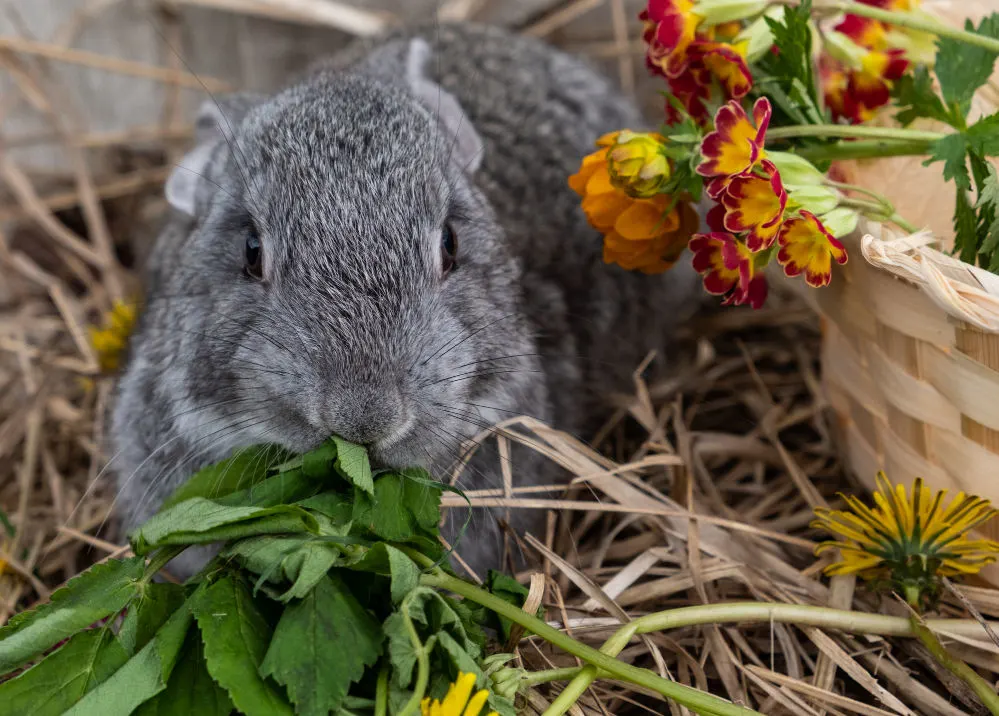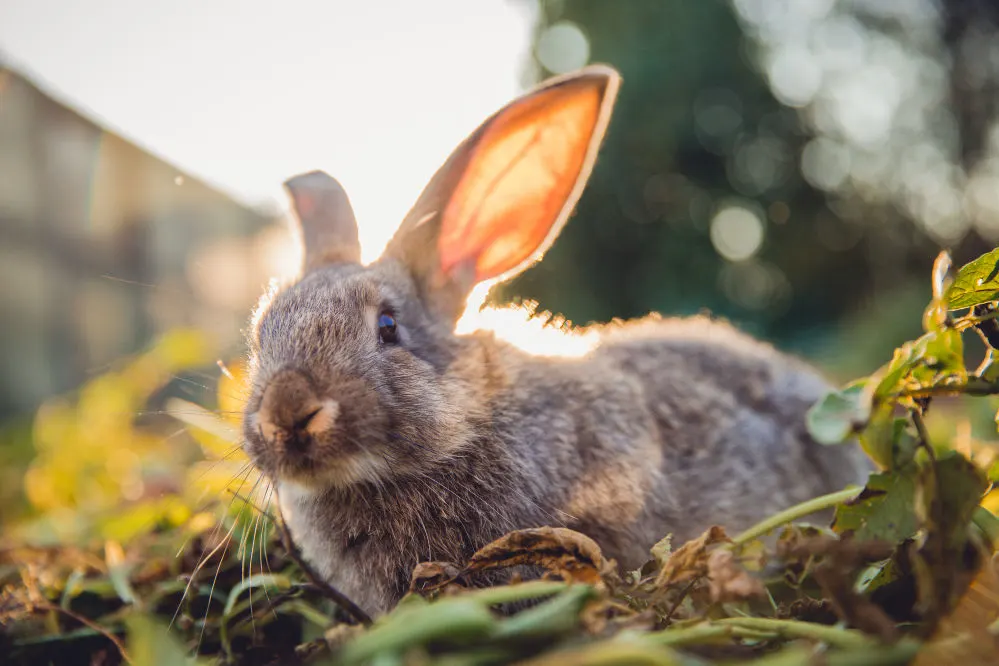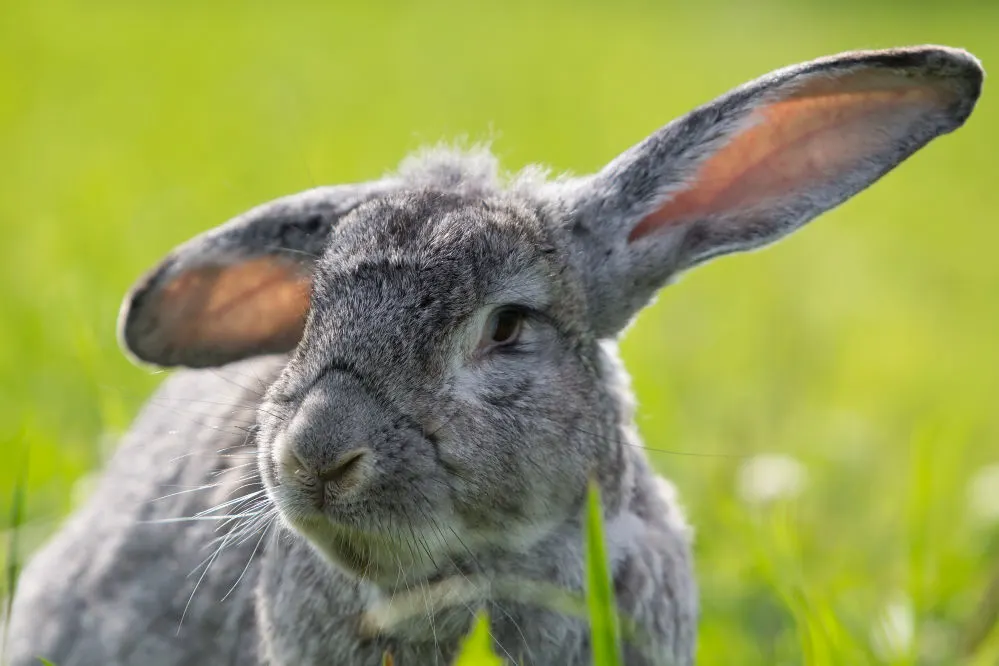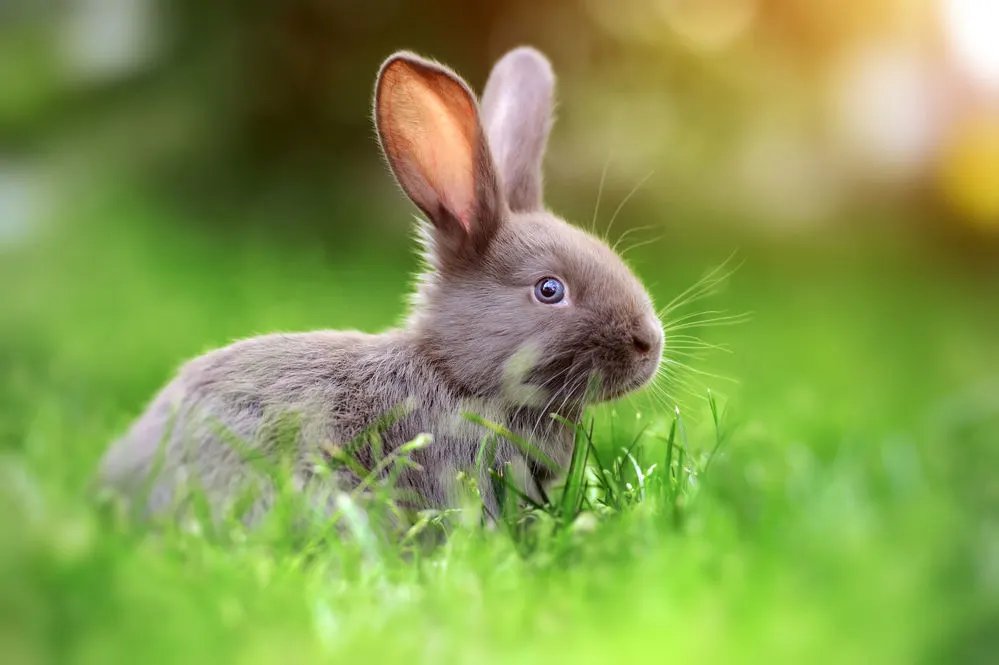You might have heard somewhere through the grapevine that lettuce leaves are the perfect leafy greens for a fluffy rabbit. That said, did you know that not all kinds of lettuce variants are fit for your bunny’s diet and some can even cause health problems in large amounts?
Even those that are okey, like romaine lettuce, shouldn’t always be part of a daily meal plan.
Keep reading to discover more about the benefits of feeding your furry friend some romaine lettuce, how often these feedings should be, and the problems that may arise from overfeeding.

What is romaine lettuce?
Romaine lettuce is a type of lettuce that grows in tall heads of sturdy dark green leaves. Unlike most other lettuce varieties, romaine lettuce is actually tolerant of heat and is quite crunchy. The center of the head, known as the romaine heart, is more yellow in color and a lot sweeter and crunchier than the leaves.
Can your rabbit eat romaine lettuce leaves?
Romaine lettuce leaves are among the safest leafy greens to feed to your furry friend. The leaves, and the romaine hearts, are a great addition to your pet rabbit’s veggie diet when given in healthy amounts. Organic lettuce is better, as it’s less likely to contain chemicals that could be harmful to your pet.
The leaves are particularly beneficial for bunnies thanks to their dark green, crunchy leaves, which are vitamin C rich. For rabbits, the darker the green on the lettuce leaves, the healthier the vegetable. But, as with all lettuces, romaine has a very high water content which can cause problems for your rabbit if they are fed too much of it.
What are the health benefits of romaine lettuce for pet rabbits?
This type of lettuce actually has quite a bit of nutritious benefits for your rabbit when fed in small quantities or as an occasional treat. For starters, the crunchiness of the leaves and its heart is great for keeping their teeth from growing too long and for protection from dental disease.
The leaves also have a good amount of nutrients like potassium, magnesium, phosphorus, and calcium. It is also a great source of Vitamin A (good for your bunny’s heart, lungs, and kidneys) and Vitamin K (really good for controlling blood clot development).
There is also a bit of folic acid in romaine lettuce, which is very good for boosting your rabbit’s immune system and reducing the risk of anaemia.
Another great benefit, and perhaps the most obvious, is that romaine lettuce leaves are a great alternative for hydrating your rabbit if they’re not drinking enough water throughout the day. However, this leafy green’s water content is, unfortunately, a double-edged sword.
What health issues can arise if rabbits eat large quantities of romaine lettuce?
Firstly, the fact that romaine lettuce leaves are so rich in water makes them especially risky for a rabbit’s daily consumption. If you’ve been feeding your pet romaine on a daily basis, there is a very high risk that they could develop diarrhoea, loose stools, or even Gastrointestinal (GI) stasis.

It is also not good for rabbits to consume too much of any vitamin or mineral. As romaine lettuce has especially high levels of calcium, it can be harmful to your rabbit when given in excess. Remember, rabbits cannot throw up any food or substance that causes them digestive issues.
So if you’re worried that you might be overfeeding romaine lettuce to your bunny, the first thing you need to do is see what your rabbit’s poop looks like, as it might be having a negative impact on your rabbit’s digestive system.
Softer stool pellets with leafy greens in them are usually a sign that your rabbit’s stomach is not agreeing with the romaine lettuce. This does not mean that you need to cut the green out of their diet completely, but you should start lowering the quantity in their bowls immediately.
How much lettuce should you include in your rabbit’s diet?
As you now know, romaine lettuce hearts and leaves should not be given on a regular basis to rabbits. It is better to feed your pet bunny small portions (one to two leaves per serving) roughly once or twice a week. The only food you should be giving your rabbit on a daily basis is enough hay.
For a balanced diet, about 80% of your rabbit’s food should be good quality hay like Timothy Hay, with only about 10% consisting of leafy greens. The other 10% should be a mix of other fresh vegetables or fruit and nutritional pellet supplements.
This means that when you include romaine lettuce into their meal, it should be both properly washed and evenly mixed in with other vegetables in a healthy bunny salad. It’s better to cut up or shred the leaves, especially if you are serving them from the romaine heart.
If you’re looking to start feeding your bunny romaine lettuce, you should start off slowly and small. It is always best not to start feeding new food too drastically, so your bunny can adjust accordingly.
You should always remember that it is better to overfeed them hay than it is to overfeed them vegetables and leafy greens.
Can you feed your rabbit overripe romaine lettuce?
The general rule when it comes to feeding rabbits any kind of vegetable or leafy green is that they must be both fresh and properly washed. So the shortest answer is no, you should not feed your rabbit overripe romaine lettuce.
Romaine lettuce typically lasts for about twenty days when refrigerated and stored properly. As you should only be feeding romaine lettuce to your bunny at most twice a week, there’s no need to be buying and keeping an entire head just for them.

You can just keep a few cut or shredded leaves that are both fresh and properly washed in a plastic container in the fridge. They will store better if you place a damp paper towel in between the layers. Overripe romaine lettuce leaves are usually softer and slimy.
As this type of lettuce is most beneficial for rabbits when the leaves are crunchy and fresh, any overripe leaves are not suitable for their diet.
What other types of lettuce are good for rabbit food?
As a rabbit owner, you should be especially mindful of the kinds of lettuce you feed to your rabbit, as not all of them are suitable for their meals. Romaine lettuce is definitely among the safest options to choose from, but some of the others include:
- Green leaf lettuce
- Red leaf lettuce
- Lamb’s lettuce
- Butterhead lettuce

Green or red leaf lettuce is usually the better alternative to romaine lettuce for its high vitamin content and low calories. The red-leaf varieties have a higher antioxidant content, whereas the green-leaf lettuce varieties are richer in Vitamin K.
On the other hand, romaine lettuce is a lot better than butterhead or lamb’s lettuce as they have the lowest nutritional value. There is also a chance that your bunny might not enjoy the tangier, nuttier taste of lamb’s lettuce.
Although these alternatives would make for some great additions to your bunny’s meal, you should remember that the general rule still applies. Lettuce, the safe kind, should only be given occasionally and partially in a mix with other veggies or leafy greens.
It’s also really important to note that rabbits shouldn’t eat iceberg lettuce, as this kind of lettuce contains lactucarium, a milky fluid, that can be harmful in large quanities.
Final thoughts: is romaine lettuce good for rabbits?
Now that you know that romaine lettuce is actually quite beneficial for rabbits, you should still remain cautious. These greens are great only when given in handfuls at a time and are not suitable for your rabbit’s daily consumption.
Nonetheless, it’s always good to know and to learn about what greens and vegetables make for great additions to their meals. For rabbit owners, the goal should always be to provide the best care and healthiest diet, so your pet can grow and live in the best comfort.
Now that you know the ins and outs of feeding romaine lettuce to your fluffy friend, why don’t you discover if rabbits can have squash? After all, the more you know, the better a parent you’ll be for your small bundles of joy.
Steph Dyson is a travel journalist by trade but a lover of all small pets. She’s been a pet mum to everything from gerbils to guinea pigs, rabbits to hamsters, and fish to dogs of all shapes and sizes. She wants to share her years of experience with small pets and make Small Pet Guides the go-to website for pet owners seeking information and care advice.

